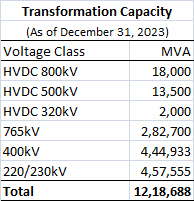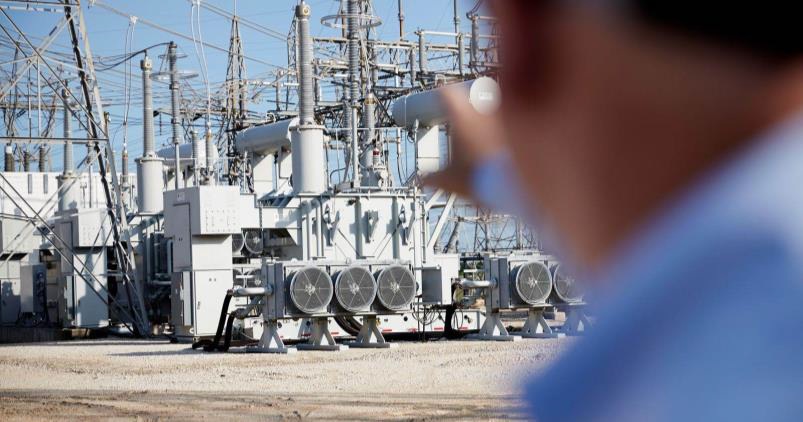The total substation (transformation) capacity added in the first nine months of FY24 was 19 per cent lower than in the same period of FY23.
According to latest statistics released by Central Electricity Authority (CEA), India added 38,336 MVA of transformation capacity in the first three quarters (April to December) of ongoing FY24, which was 19 per cent lower than the 47,272 MVA added in the same period of FY23.
Besides, the actual achievement in the April-December period of FY24 was only 61 per cent of the 62,404 MVA planned to be added in the period.
 In terms of voltage class, the biggest decline in substation capacity addition was seen in the 765kV category, followed by the 220kV class. As against 12,000 MVA of 765kV-based transformation capacity added in the April-December period of FY23, addition in the same period of FY24 was 6,000 MVA – a fall of 50 per cent. In the 220kV class, this decline was around 20 per cent.
In terms of voltage class, the biggest decline in substation capacity addition was seen in the 765kV category, followed by the 220kV class. As against 12,000 MVA of 765kV-based transformation capacity added in the April-December period of FY23, addition in the same period of FY24 was 6,000 MVA – a fall of 50 per cent. In the 220kV class, this decline was around 20 per cent.
On the other hand, 400kV-based substation capacity added in April-December period of FY24, at 19,185 MVA, was 2.2 per cent higher than the achievement in the same period of FY23.
No HVDC substations were commissioned in the first three quarters of FY24 as was the case in FY23. In fact, for the whole of FY24, no HVDC-based transmission infrastructure has been envisaged.
In terms of ownership, the private sector performed the best. During the first three quarters of FY24, this ownership group added 7,000 MVA of substation capacity, 40 per cent more than the 5,000 MVA added in the same period of FY23. State government utilities commissioned 20,701 MVA worth of transformation capacity, which was 15.5 per cent lower than in the same period of FY23.
The performance of Central government agencies (mainly covering Power Grid Corporation of India Ltd) was disappointing with addition in the April-December period of FY24, at 10,635 MVA, down 40.2 per cent from 17,770 MVA in the like period of FY23. The biggest decline came from 765kV substations where the addition was 1,500 MVA as against a much higher 7,500 MVA in FY23. (See table).
Transformation capacity base
 As of December 31, 2023, India’s aggregate transformation capacity stood at 12,18,688 MVA as against 11,51,722 MVA as of the same date in 2022 – a growth of 6 per cent.
As of December 31, 2023, India’s aggregate transformation capacity stood at 12,18,688 MVA as against 11,51,722 MVA as of the same date in 2022 – a growth of 6 per cent.
The installed transformation capacity, as of December 31, 2023, was mainly accounted for by 220kV substations with a share of 37.5 per cent. The 400kV category came a close second with 36.5 per cent. The 765kV class had a share of 23.2 per cent in India’s total transformation capacity, mostly unchanged from its share as of December 31, 2022.
With respect to ownership, state government utilities dominated with a share of 55.9 per cent in India’s total substation capacity as of December 31, 2023. Central utilities followed with a 39.5 per cent share. The private sector has seen its share improving somewhat to 4.6 per cent as of December 31, 2023 from 4.2 per cent in 2022.
Also read: Substation Capacity Addition Falters At 765kV Level
Note: The above study is restricted to substations of 220kV or higher. Featured photograph (source: Hitachi Energy India) is for representation only.



